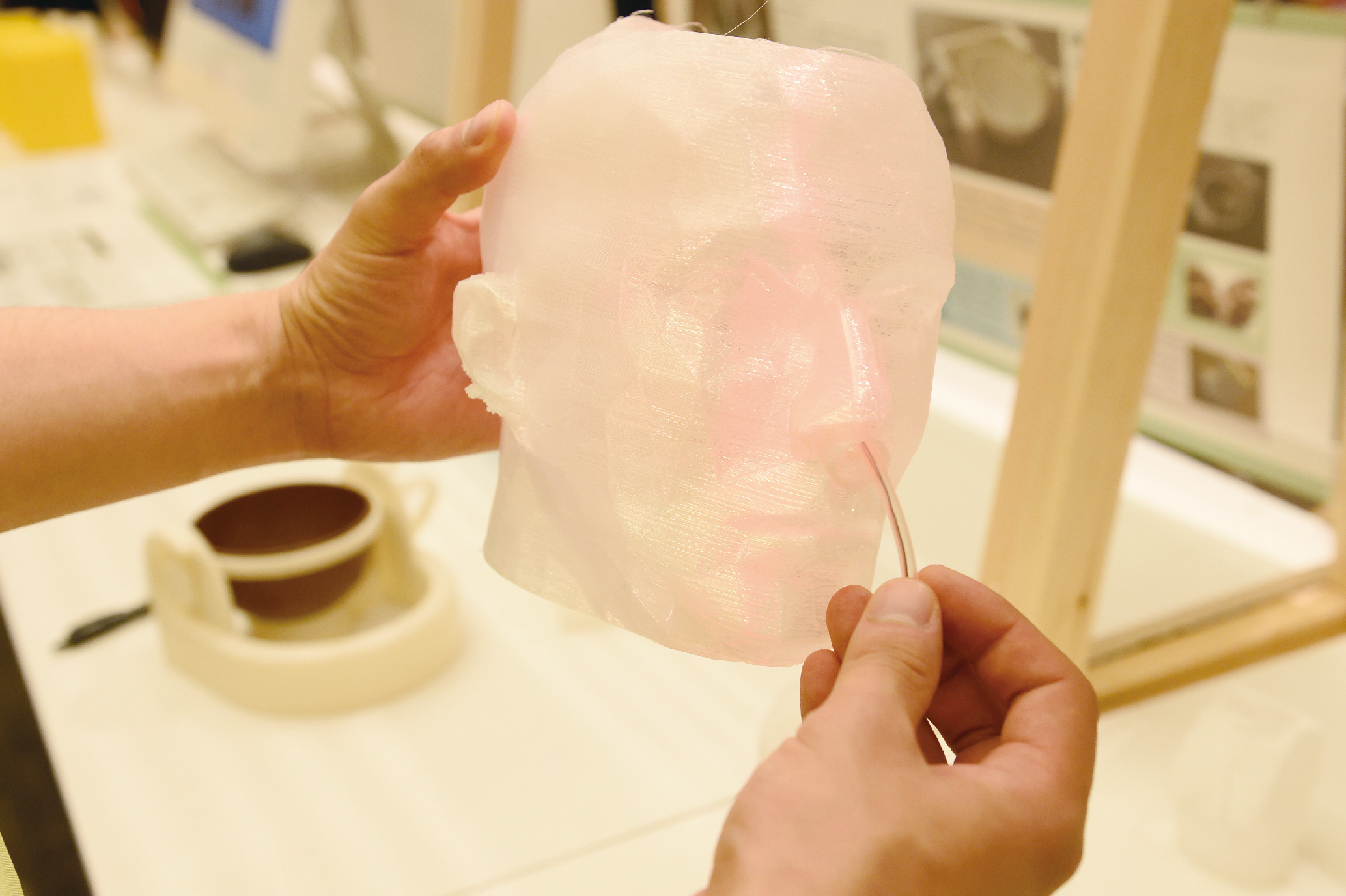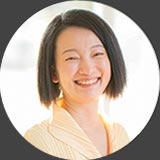#019
Harnessing IT to improve
the quality of life of
patients and disaster victims
Shoko Miyagawa
Japanese Color: KOUBAI-iro
#019
Shoko Miyagawa
Japanese Color: KOUBAI-iro
MOVIE

Associate Professor
Faculty of Nursing and Medical Care
A long time has passed since Japan earned the title of an “advanced information society.”However, that’s an empty title if the information does reach those who actually need it. Associate Professor Shoko Miyagawa is approaching the task of realizing better care inthe medical field and at disaster areas by making use of IT.
Provide accurate information, and assist in better decision-making.
Build an information system to facilitate the smooth execution of rescue and relief activities in cooperation with aid and rescue workers during a disaster.
She also aims to provide support for nursing care through the application of digital fabrications,and to improve the QOL (quality of life) of patients and disaster victims through the use of IT.
Health informatics, my fields of research, is an academic discipline that considers how to use various types of information to improve health. Recently, there have been problems related to the circulation of groundless information on curated medical information websites. Broadly defined, such topics also come under the umbrella of health informatics.
The mass circulation of false stories and information around the world can influence many people to make the wrong decisions about their health, and ultimately, have an adverse impact on society as a whole. While the circulation of unreliable information on the Internet and other sources is unavoidable, how do we distinguish it from accurate information? When people make decisions, an element of uncertainty is constantly present; however, it is important for us to pursue and identify the kind information that can be provided to reduce uncertainty and bring about satisfactory decision-making.
This is precisely what health informatics is about, and this is my field of specialization alongside with disaster informatics. Each field covers various themes, including the systems and tools necessary for supporting better decision-making. In recent years, I have been focusing on the production of healthcare supplies using 3D printers and other equipment, as well as research on information systems to facilitate the smooth execution of rescue activities during a disaster.

The current focus of my research activities is a project titled “Fab Nurse,” which is a collaborative project with Professor Hiroya Tanaka from the Faculty of Environment and Information Studies. In this project, we harness digital fabrication technology to product healthcare supplies. Although I myself am not a nurse, in my work teaching IT at the Faculty of Nursing and Medical Care, which has a nurse-training curriculum, as well as learning about medical treatment at the same time, I developed an interest in the field of home care.
For example, in the hospital room, patients are in an environment with uniform quality, such as beds of the same size, and nurse call buttons by the bedside. However, if we were to turn our eyes to the site of home care, we would find that each individual is situated in a completely different environment, such as the layout of the house, the floor that the patient lives on, and whether he or she sleeps on a mattress on the floor or on a bed. To provide the best care in such environments that differ among individuals, it is necessary to take steps that respond to individual needs. My research work had been triggered by the idea that there may be great potential for the future of healthcare through support using IT.
At about the same time, I encountered Professor Tanaka when he came to SFC (Keio University Shonan Fujisawa Campus) and commenced work on digital manufacturing. This turned out to be a significant event. Initially, I had watched his work from afar, but manufacturing technology improved gradually with the introduction of a 3D printer in the university that anyone could use freely. It was then that I realized that digital fabrication could be highly compatible with the individuality and diversity of home care, and we decided to embark on the collaborative project.

(including nasal and pharynx)
produced with a 3D printer. Used for practicing inserting the tube for sputum suction.
The first product manufactured under the “Fab Nurse” project was a self-help tool that allowed patients with paralysis in their hands to hold a pen. We tend to think of elderly care when we talk about visiting nurses, but they actually provide care to various groups of patients, including children who require medical care and people who have become disabled due to traffic accidents. In this case, a visiting nurse requested a consult for a patient who had suffered from a cervical cord injury in a traffic accident and found it difficult to apply pressure when writing. In response, we used a 3D printer to produce a self-help tool that made it easier for the patient to hold the pen and apply pressure. Being able to apply pressure and write makes it possible for patients to write on their own without asking others for help in filling in delivery slips and insurance claim documents. For persons with disability, this not only makes it possible for them to do one more thing on their own, but also supports them in participating actively in society at their own will despite their disability.
Apart from that, we also produced a device that helps people using prosthetic hands to tilt a bowl, as if using their own hands, at an angle that makes it easier for them when they are drinking soups such as miso soup. The merit of digital fabrication is that once the data has been produced, it can be disseminated across the world via the Internet. For example, if there were patients in similar circumstances in Japan and the Philippines, it would then be easy to customize the item locally by making use of the online data generated by others.
Through these manufacturing activities, we came to the conclusion that there was much IT could offer to make the daily lives of those receiving home care as effortless as possible, in other words to improve their QOL by individually tailoring their care.
The concept of QOL, which we believe to be very important, is one that is also applied in the field of disaster informatics. In fact, my original field of research had been disaster informatics. My first brush with a disaster was during the Great Hanshin Earthquake that struck in 1995. At the time, Internet technology had not yet spread to the general public. Working alongside volunteers who were providing information for the benefit of the disaster areas, I considered the possibility of sharing information by connecting personal computer communications, which had been thriving at the time, to the Internet amidst a situation of serious information inadequacy at the disaster sites. This triggered the start of my research work in this field.
After experience various disaster sites, a significant turning point was the Great East Japan Earthquake that hit in 2011. During the numerous trips that I made to the disaster areas, I was confronted by the difficulties of capturing what was truly necessary and providing suitable assistance to those receiving care while they living at temporary accommodations, evacuation shelters, or in their own homes. Furthermore, there were also cases of patients with chronic diseases who chose not to tell anyone that they had no medication, but just endured their suffering and allowed their health to decline gradually. Identifying such situations is one of the themes that is common to both health informatics and disaster informatics. With respect to disaster-related work, in addition to research, I am also involved in an organization that provides information support during disasters. During the Kanto Tohoku flood in 2015 and the Kumamoto Earthquake in 2016, we visited the actual disaster sites and engaged in information support activities.
Going forward, I am interested in the application of new technologies to society. Cutting-edge information technology has the potential to significantly transform existing healthcare systems. Other than digital fabrication, I would also like to explore how other forms of advanced information technology such as AI (artificial intelligence) and blockchains can be applied to healthcare.

A map visualizing the status of the support activities, produced by IT DART (Information Technology Disaster Assistance and Response TEAM), the disaster assistance organization that Associate Professor Miyagawa helps to manage.
To rebuild lives in disaster-hit areas, it is important for victims to be able to not only live good lives but also live lifestyles they are comfortable with. These factors are related to the personal health of these individuals. In studies aimed at understanding such hidden needs, there is a tendency to think that this can be achieved efficiently if IT is utilized. However, the reality is, there are many sites where the actual use of IT is simply not practical. In light of that, in order to capture the available health-related information fully and completely, we need to incorporate non-IT tools for actual information collection, while attempting to support better decision-making through the use of IT in the backend.
For example, when conducting health assessments at areas affected by the Great East Japan Earthquake, there were nurses who were not accustomed to using tablet devices, and collecting information using paper forms proved to be more efficient. We created a mark sheet form and built a system that could scan these sheets and automatically tally the results. Initially, the nurses would spend their nights inputting all the data into computers, but that is not the job of a professional nurse. By placing the burden of data entry on IT, it became possible to give the nurses more rest time, and allow them to carry out their activities properly the next day.
Hence, an important role of health informatics is to support not only the victims, but also those providing assistance on the field so that they can perform their jobs at an optimal level. It is my goal to provide support for better decision-making, not only for the patients, victims and health care professionals, but all support players involved. This is what motivates my research work in the fields of health informatics and disaster informatics.
This is a health assessment form, in a mark sheet format, used at disaster sites after the Great East Japan Earthquake. By automating the data entry and tallying of results, the initiative succeeded in eliminating manual data entry work by nurses.

Shoko Miyagawa
Associate Professor, Faculty of Nursing and Medical Care, Keio University. Completed the credits for the Doctoral Program at the Graduate School of Media and Governance, Keio University. Ph.D. in Media and Governance. Specializes in health informatics and disaster informatics. Research covers themes such as health-development communities through the application of IT, and the role of information support at the sites of the Great East Japan Earthquake.

2017.Mar ISSUE